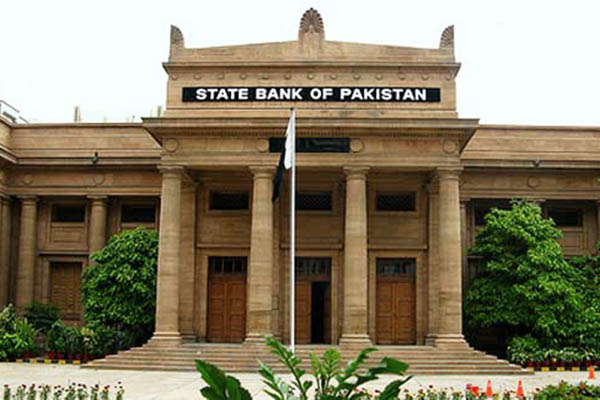
No Credit
The State Bank of Pakistan (SBP)’s Monetary Policy Committee (MPC) on Monday maintained the policy rate at 22 percent for a sixth consecutive time, stressing a “cautious” approach was warranted amidst decelerating but persistently high levels of inflation.
In a statement, the central bank noted that inflation had begun to decline noticeably in the second half of the ongoing fiscal year. However, it observed, the sharp deceleration in February had not dented the persistently high levels of inflation, whose outlook was susceptible to risks amidst elevated inflation expectations. “This warrants a cautious approach and requires continuity of the current monetary stance to bring inflation down to the target range of 5-7% by September 2025,” it said, noting this assessment was contingent upon continued targeted fiscal consolidation and timely realization of planned external inflows.
On the inflation outlook, the MPC noted it had declined from 28.3% in January to 23.1% in February, adding core inflation had decelerated to 18.1% percent in February from 20.5% in January. “The improvement in inflation broadly reflects the combined impact of contractionary monetary policy, fiscal consolidation, better food supplies, moderating global commodity prices and favorable base effect,” it said, while noting that tariff adjustments in energy prices continued to contribute to inflation directly and indirectly. “This has implications for the needed sustained decline in inflation expectations of both consumers and businesses,” it said, warning any further adjustments in utility prices posed risks to the near- and medium-term inflation outlook.
The MPC also noted a moderate uptick in economic activity, led by rebound in agriculture output, as well as a “better than anticipated” current account balance that has helped maintain foreign exchange reserves despite weak financial inflows. “Third, while inflation expectations of businesses have shown a steady increase since December, those for consumers have also inched up in March,” it said, adding globally the broader trend in commodity prices remained benign, though oil prices had spiked, partly due to tensions in the Red Sea. “Moreover, amidst uncertainty regarding the inflation outlook, key central banks in both advanced and emerging economies have continued to maintain a cautious monetary policy stance in recent meetings,” it added.
The central bank statement said incoming data supported the view of GDP growth hitting 2-3% in the ongoing fiscal, with agriculture as its key driver. In the industrial sector, it said, large-scale manufacturing—despite a slight decline of 0.5% during July-January—was expected to recover in the coming months due to improved capacity utilization and employment conditions and favorable base effect. “Furthermore, knock-on impact of commodity producing sectors and other leading indicators point towards gradual recovery in the services sector,” it added.
On the current account, the MPC noted a deficit of $269 million in January 2024, leading to a cumulative deficit of $1.1 billion from July 2023 to January, a decline of around 71 percent year-on-year. It credited this improvement to a narrowing of the trade deficit, driven by an increase in exports and a decline in imports. “The exports have risen on the back of higher food exports, whereas import payments have remained subdued due to better domestic agriculture output, moderate domestic demand and supportive global commodity prices,” it said, adding workers’ remittances had also risen consistently on year-on-year basis since October 2023. “Financial inflows showed a modest decline in January amidst continuing public debt repayments in the absence of significant official and private sector inflows,” it said, adding it expected the current account deficit to remain closer to the lower level of 0.5-1.5% of the GDP forecast.
Referring to data on fiscal accounts, the MPC said the first half of the ongoing fiscal saw the primary surplus improve to 1.7% of GDP from 1.1% in the same period last year, while the overall fiscal deficit deteriorated to 2.3% of GDP from 2% a year earlier. “The MPC emphasized that the continuation of fiscal consolidation is essential for ensuring overall macroeconomic and price stability,” it said.
According to the MPC, broad money growth has moderated to 16.1% in February 2024 from 17.8% in December due to lower growth in net domestic assets of the banking system. It noted that growth in reserve money continued to decelerate sharply to 8.2% in February, while the currency to deposit ratio continued to decline due to strong growth in bank deposits, along with a declining trend in currency in circulation. “These trends in monetary aggregates bode well for the inflation outlook,” it added.
